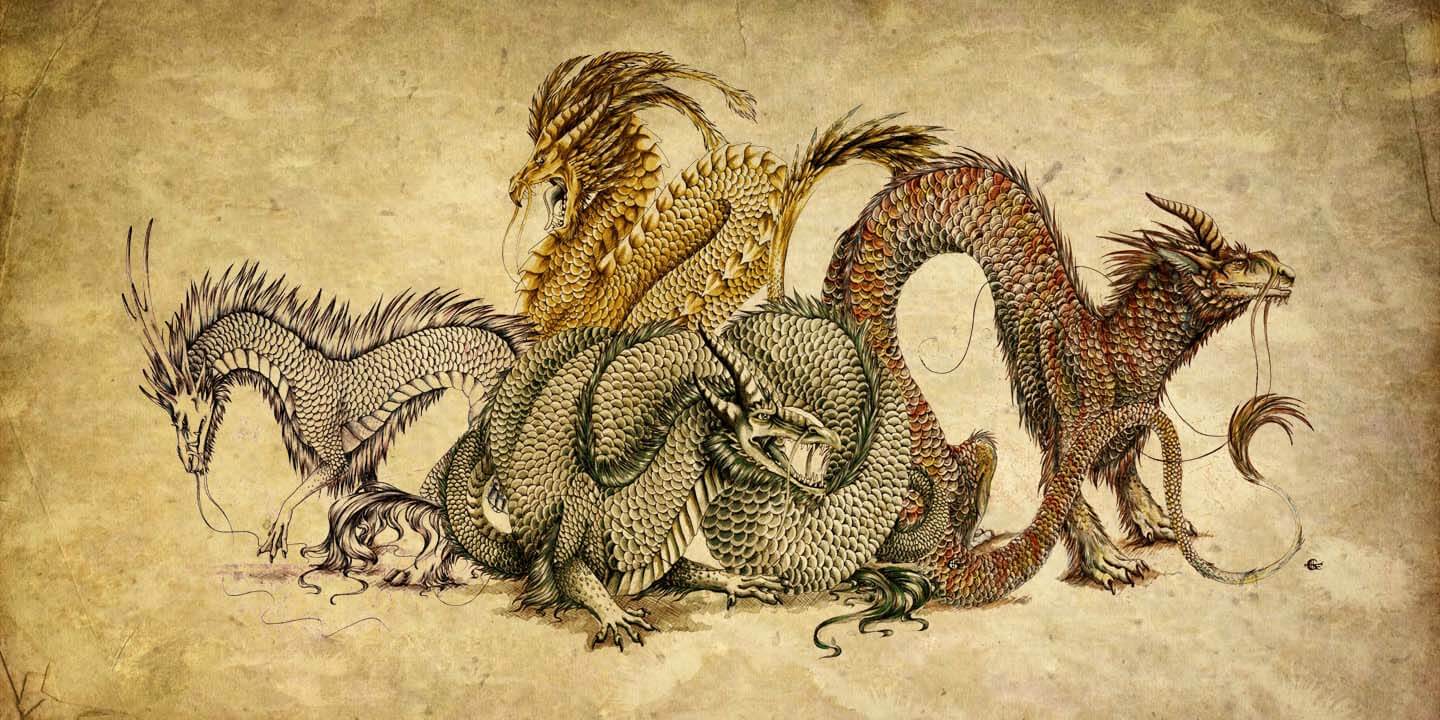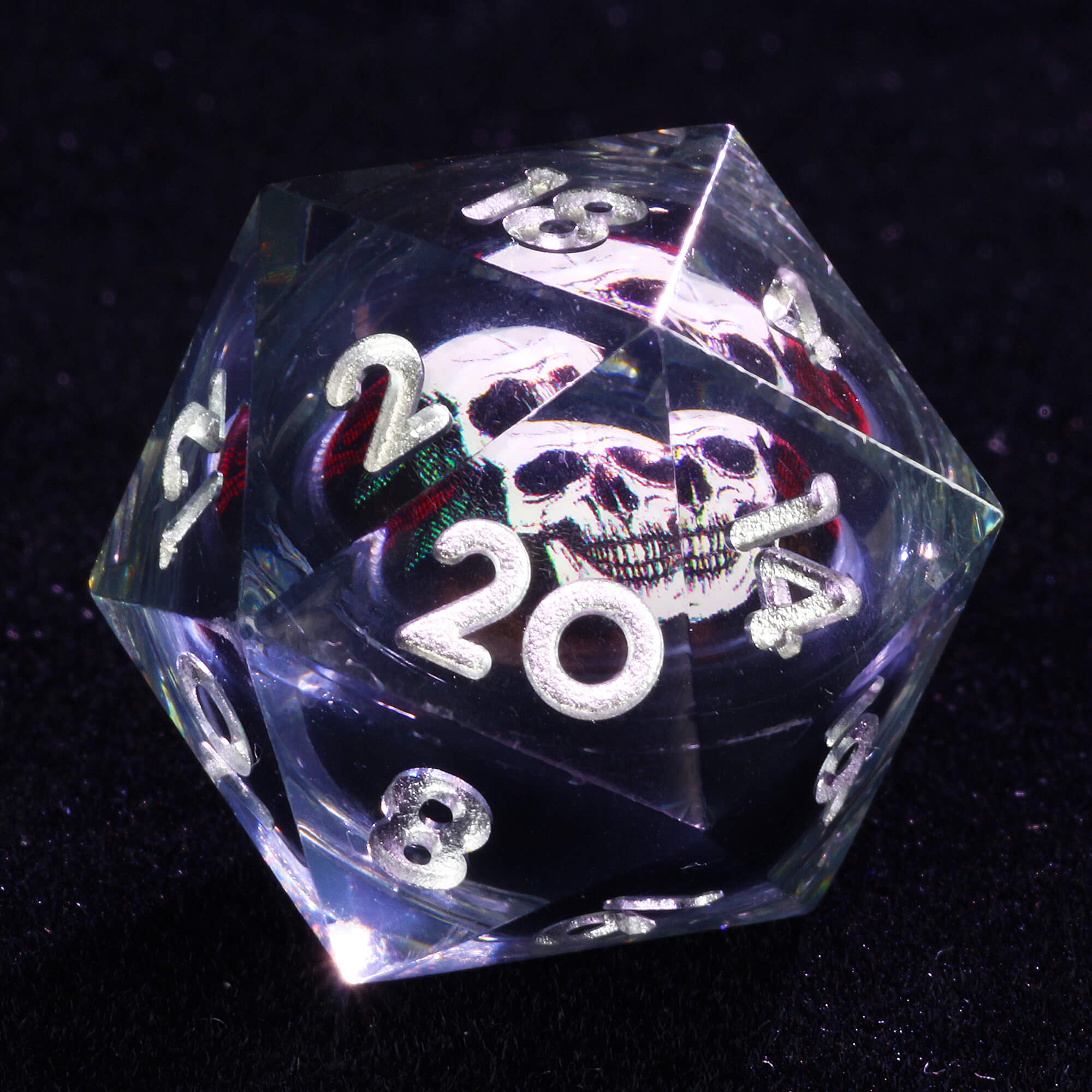Dragons have an important role in the Japanese mythology and folklore. Many temples and shrines ⛩️ have been built to honor them throughout Japan. As is the case for most Asian dragons, they are often associated with water. These powerful creatures are the subject of many tales and legends, some of which we will narrate below by having a look at 7 of the most famous Japanese dragons.
1/ Orochi: The famous eight-headed dragon
A fearsome dragon of the Japanese mythology. This legendary creature has eight heads, each one representing an element: fire, water, earth, wind, poison, thunder, light and darkness. His eyes are bloodshot and his size is beyond comprehension, as stories describe him as equal to eight mountains and eight valleys. His body, covered with moss and cedar, is constantly burning. Rivers of blood flow around him and he carries a bell, which sinister sound is feared by the local population.

The legend of Susanoo: The fallen god who slew Orochi
Orochi originated from the Izumo province and lived near the Hi River. He was spreading terror in the region and many families lost loved ones to him. To appease the monster, the king of Izumo offered one of his daughters as a sacrifice every year. One day, they were visited by the god Susanoo, who had stopped off at their farm after being banished from Heaven. Faced with this situation, Susanoo decided to defeat the beast in exchange for the king's last daughter's hand (Kushinada).
To do this, he erected a palisade around the village and left eight openings in front of which he put barrels of sake. Attracted, Orochi approached and made seven of his heads drink while the last remaining head watched. Susanoo then started to cut the heads off with his Totsuka sword, causing the dragon to rage. Orochi tried to retaliate and kill Susanoo, but because of the sake he had trouble fighting back 🥴. The god eventually managed to cut all the heads of the dragon, defeating Orochi. Susanoo found, in the dragon's tail, the sword "Kusanagi-no-Tsurugi" (The Sword of the Sky), one of Japan's three sacred treasures (which he later offered to Amaterasu). Susanoo then married Kushinada and they founded the Izumo dynasty.
2/ Ryujin: The dragon god, ruler of the seas
Ryujin, also known as Watatsumi, is a huge dragon with a long, snake-like body, covered with scales. He is usually depicted with a long mustache, a beard and three claws legs.
He lives at the bottom of the ocean in the Ryugu-jo, a huge palace made of rushes and corals, where sea turtles, fish and jellyfish are his servants. From this place, he controls the tides with jewels, which also serve as decorations for the palace. He also occasionally takes on a human form to visit the surface.

The legend of the jellyfish
The most famous story about Ryujin is that of the jellyfish (or octopus in some versions) and the monkey.
One day, Ryujin asked the jellyfish, which still had bones, a tail and feet, to bring him a monkey liver. The dragon god asked this to heal his daughter from an incurable disease. The jellyfish found the monkey and brought him back to Ryujin's palace. Once arrived, the monkey quickly understood the fate that awaited him 🙉! He therefore told the jellyfish that his liver was too heavy to carry around, so he had to hide it in a tree. He offered to retrieve it and the jellyfish accompanied him. Of course, once they arrived in front of the tree, there was no hidden liver; the monkey claiming that he had been robbed and that he was going to find the thieves to recover it.
In the meantime, the jellyfish returned to Ryujin and explained the situation to him. The dragon not being fooled, immediately understood that the monkey had played the jellyfish. Furious, he crushed the jellyfish to the point of losing all of its bones, giving it the shape that we know today.
By the way, if you'd like to read more cool stories and legends about Ryujin, feel free to check out our dedicated article on the topic: Ryujin, the Japanese dragon god.
3/ Kiyohime: The vengeful woman turned dragon

Kiyohime was the daughter of a wealthy man who held an inn for travelers on the Hidaka river. One day, a monk staying at the inn named Anchin fell in love with her. The romance was short lived as the monk soon regretted breaking his vow of chastity and consequently left to continue his journey. When she found out, the heart-broken Kiyohime decided to chase the monk 💔.
She eventually caught up to him while he was about to cross the river. The monk refused that she joined him and sailed away. However, Kiyohime, furious, jumped into the river and started to swim towards Anchin. The legend says that at this moment she turned into a dragon as a result of her anger.
She then proceeded to chase the monk who tried to find refuge in the nearby temple of Dojo-ji. Terrified by the monster that was now coming after him, Anchin hid under the temple's massive bell. Unfortunately Kiyohime found him and eventually melted the bell with her breath of fire; killing the monk in her rage.
4/ Toyotama-hime: The grandmother of Japan's first emperor
 Toyotama-hime is one of Ryujin's (the dragon god) beautiful daughters. She married the hunter prince Hoori after he rescued her from a gang who tried to kidnap her. They lived in Ryujin's underwater palace for several years but Hoori eventually missed the earth and they decided to move to his native village.
Toyotama-hime is one of Ryujin's (the dragon god) beautiful daughters. She married the hunter prince Hoori after he rescued her from a gang who tried to kidnap her. They lived in Ryujin's underwater palace for several years but Hoori eventually missed the earth and they decided to move to his native village.
She became pregnant and on the day was due, she asked Hoori not to accompany her and to let her to deliver the baby in privacy. Unfortunately, Hoori's curiosity got the better of him and followed her. As a result he witnessed Toyotama-hime's transformation into a dragon during labor (since her true form was that of a dragon and not a human). When she realized that Hoori had spied on her, she became furious and returned to live under the sea, abandoning her husband and child.
She sent her younger sister Tamayori to raise her son on the surface. Tamayori and Toyotama-hime's son eventually married and their child, Jimmu, became the first emperor of Japan.
5/ Mizuchi: The infamous water deity

The Mizuchi dragons are malicious creatures living in rivers. They have poisonous breath and often kill those who wander too close to them. The legend says that they were defeated by a man named Agatamori. He tracked them mercilessly for years in the Kawashima river until he had slew every one of them.
As a trophy, he dragged the dragons' corpses in a nearby pool of water that eventually turned red due to the dragons' blood 🩸. This place was named the pool of Agatamori.
6/ Nure-onna: The treacherous woman-dragon

Nure-onna (which means "wet woman") is a creature with the head of a woman and the body of a giant snake. Its appearance varies slightly, but it is generally described as having bulging, snake-like, eyes as well as sharp claws and fangs.
Nure-onna is usually seen on river shores, washing her long hair. In some stories, she carries a small child, which she uses to attract potential victims. When a well-meaning person tries to rescue him, the child attaches to the victim making it almost impossible to escape, leaving the victim to drown in the river. In some stories, Nure-onna uses her long and powerful tongue to suck all of the victim's blood out 😨.
7/ The Azure Dragon: Protector of Kyoto


The Azure Dragon is one of the mythical protectors of the city of Kyoto. He is said to protect the east of the city. As such, there are many temples built in his honor in the eastern part of the city. The most well known is the Kiyomizu Temple where a ceremony to worship the dragon is held every year.































